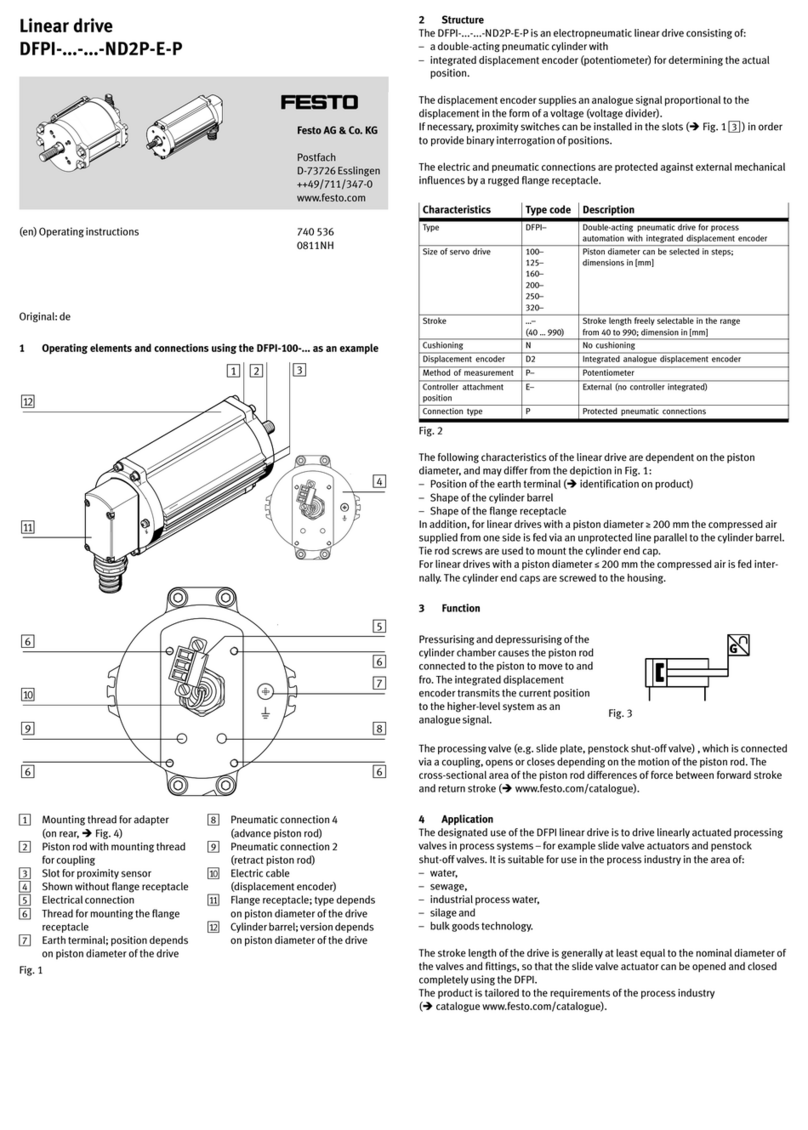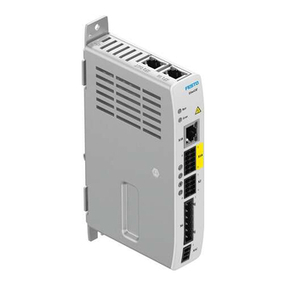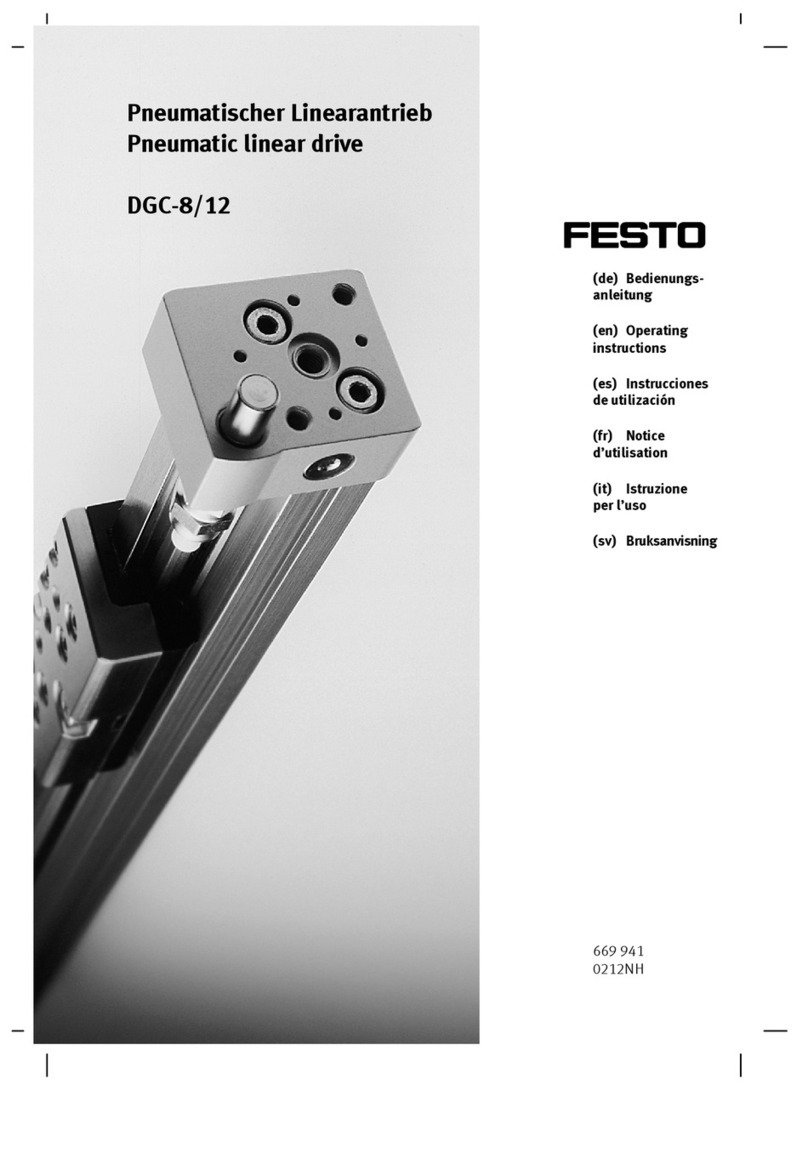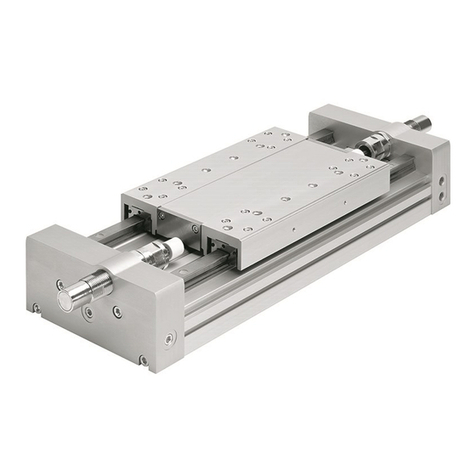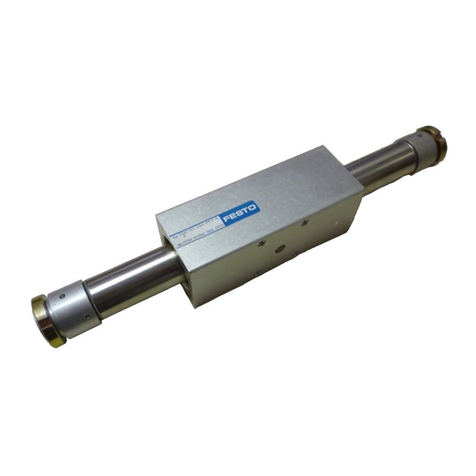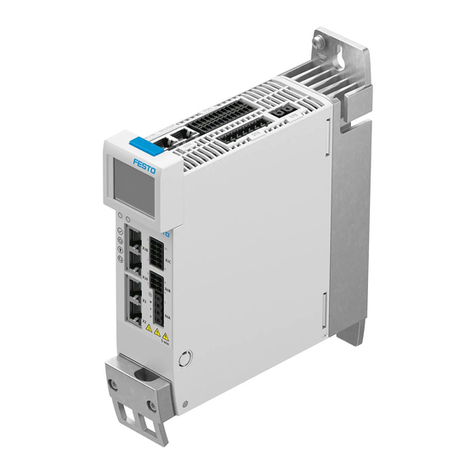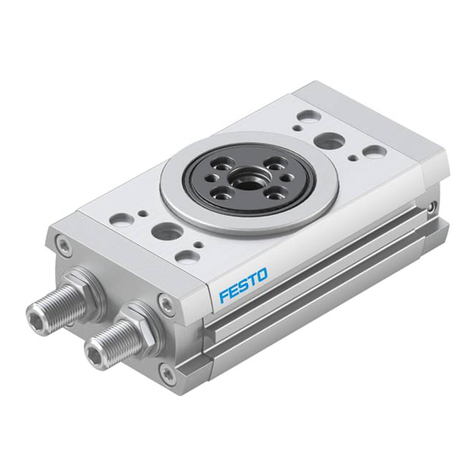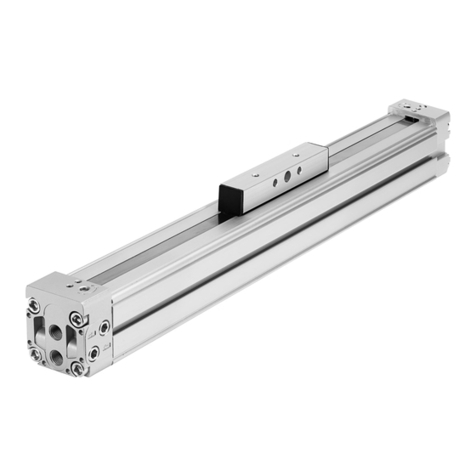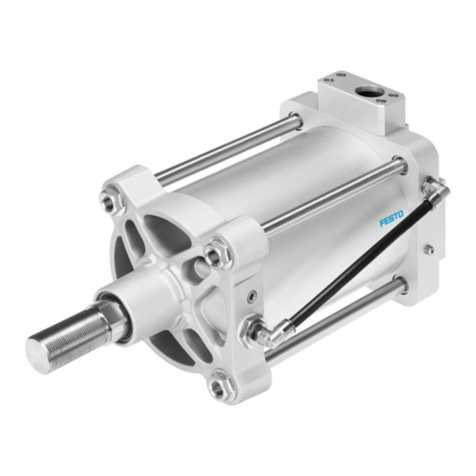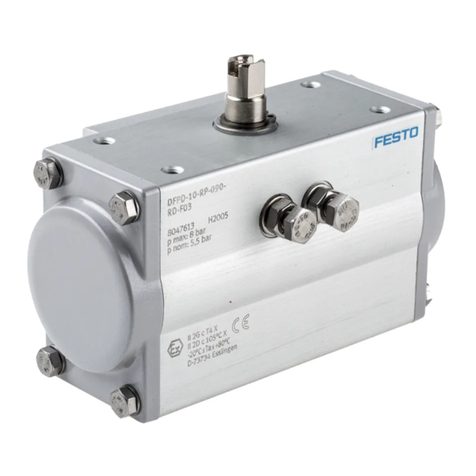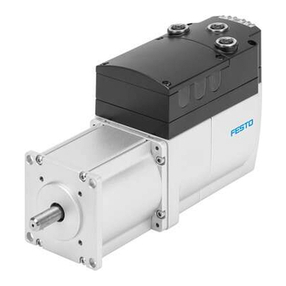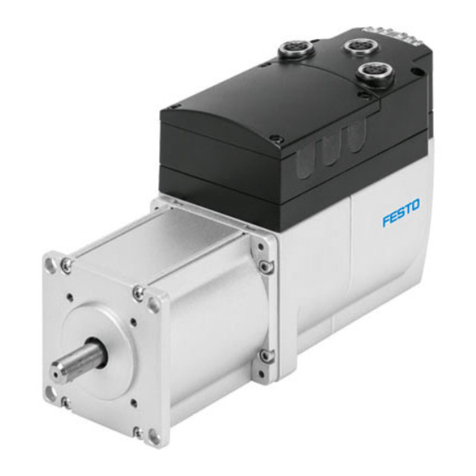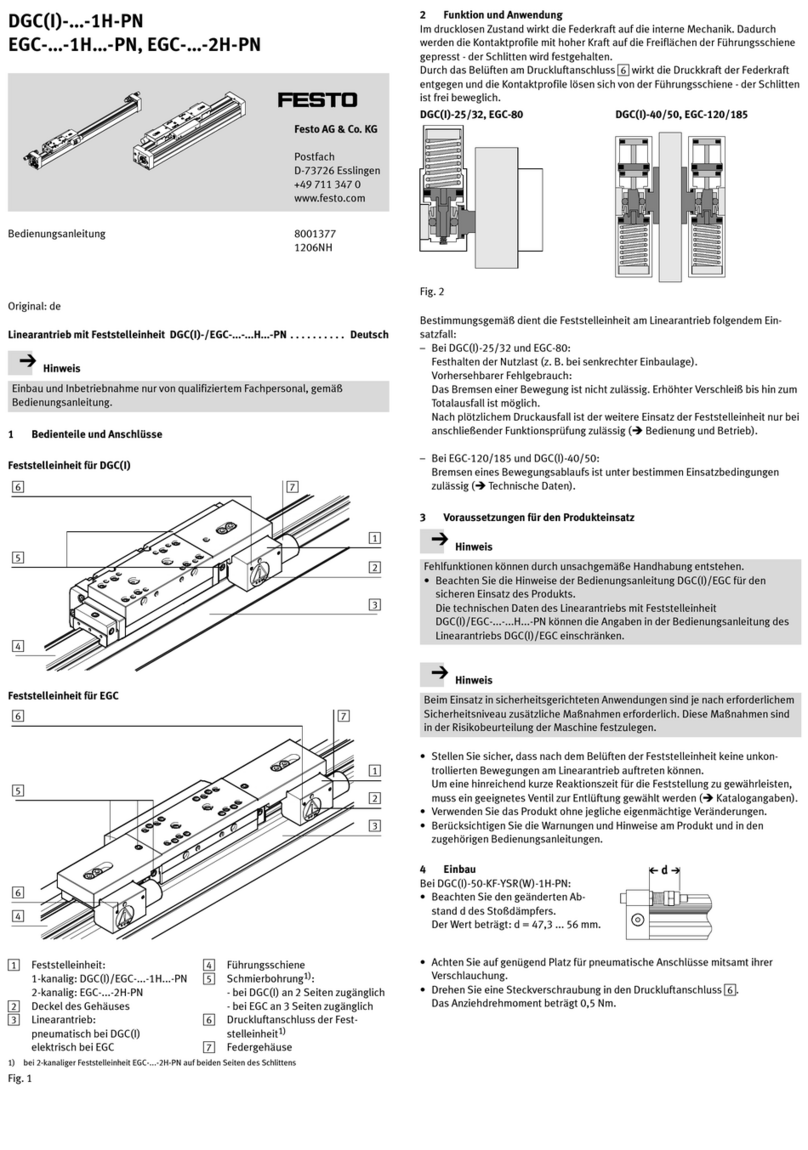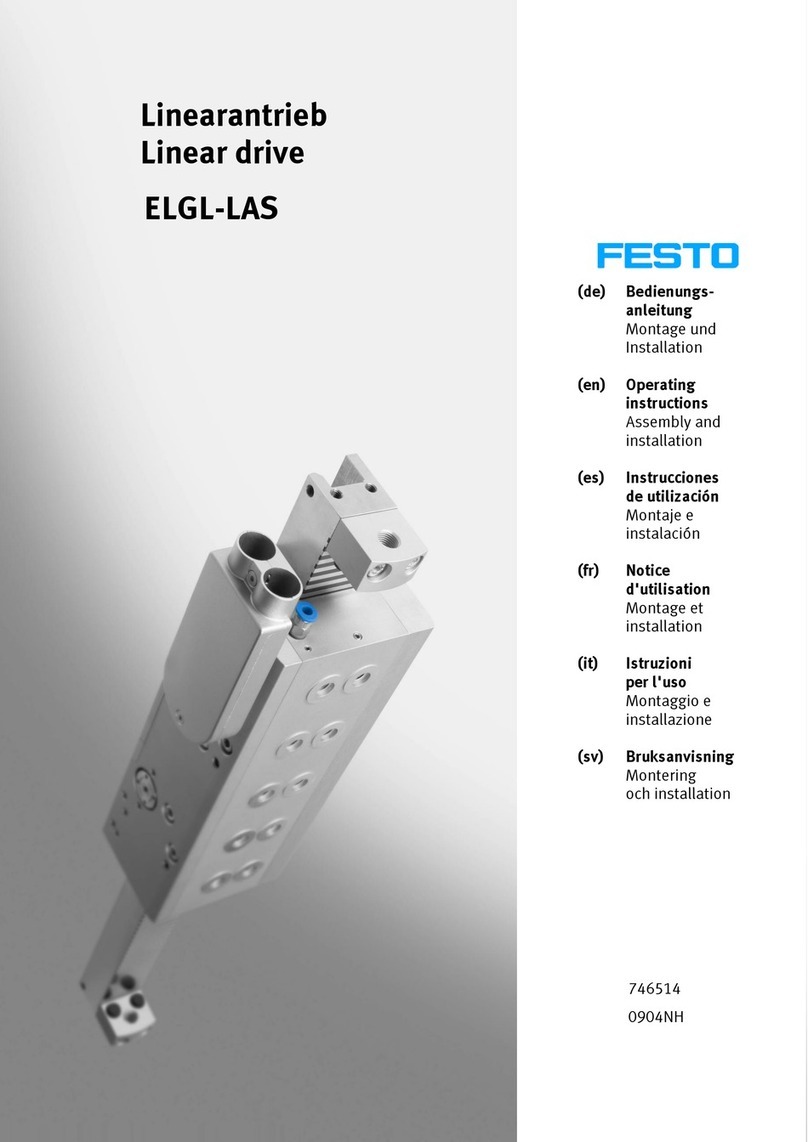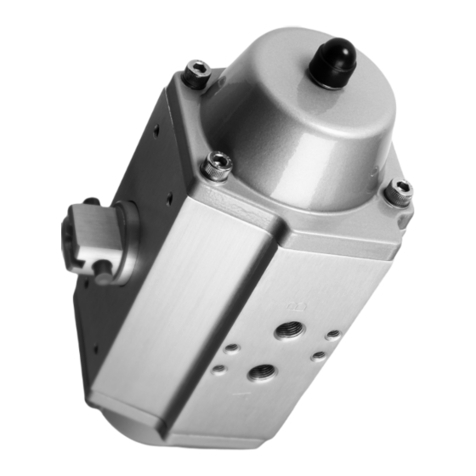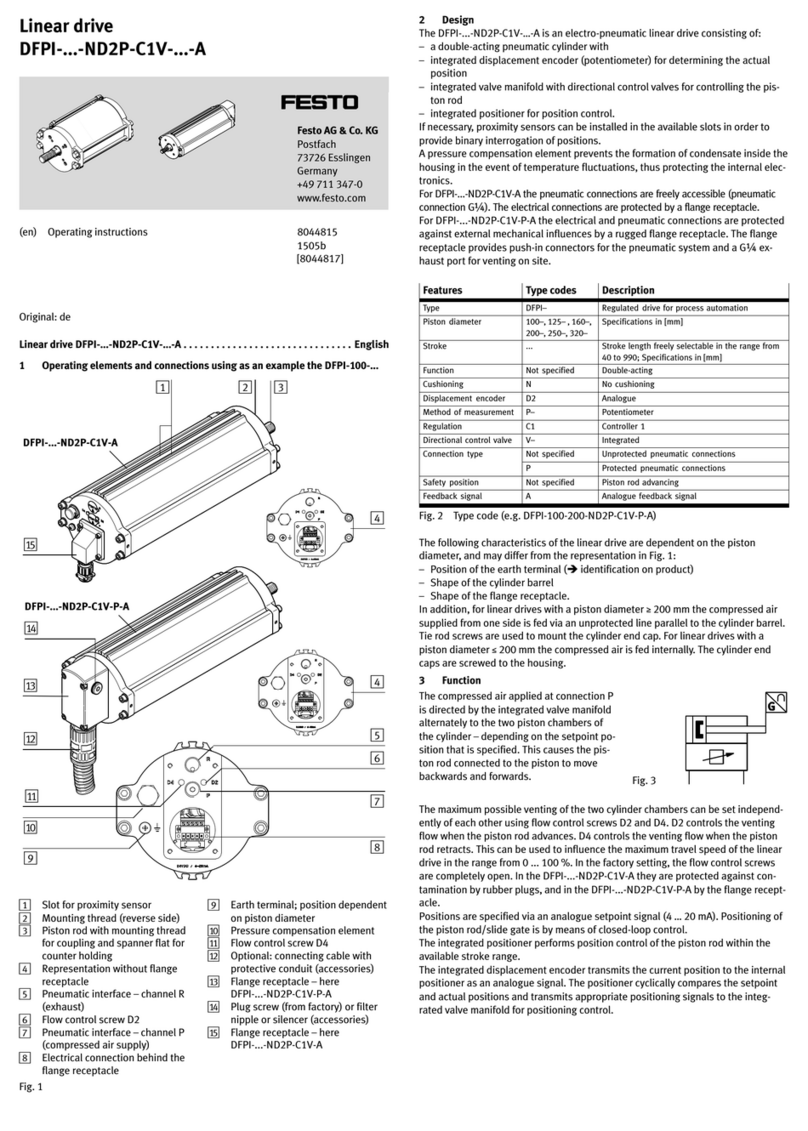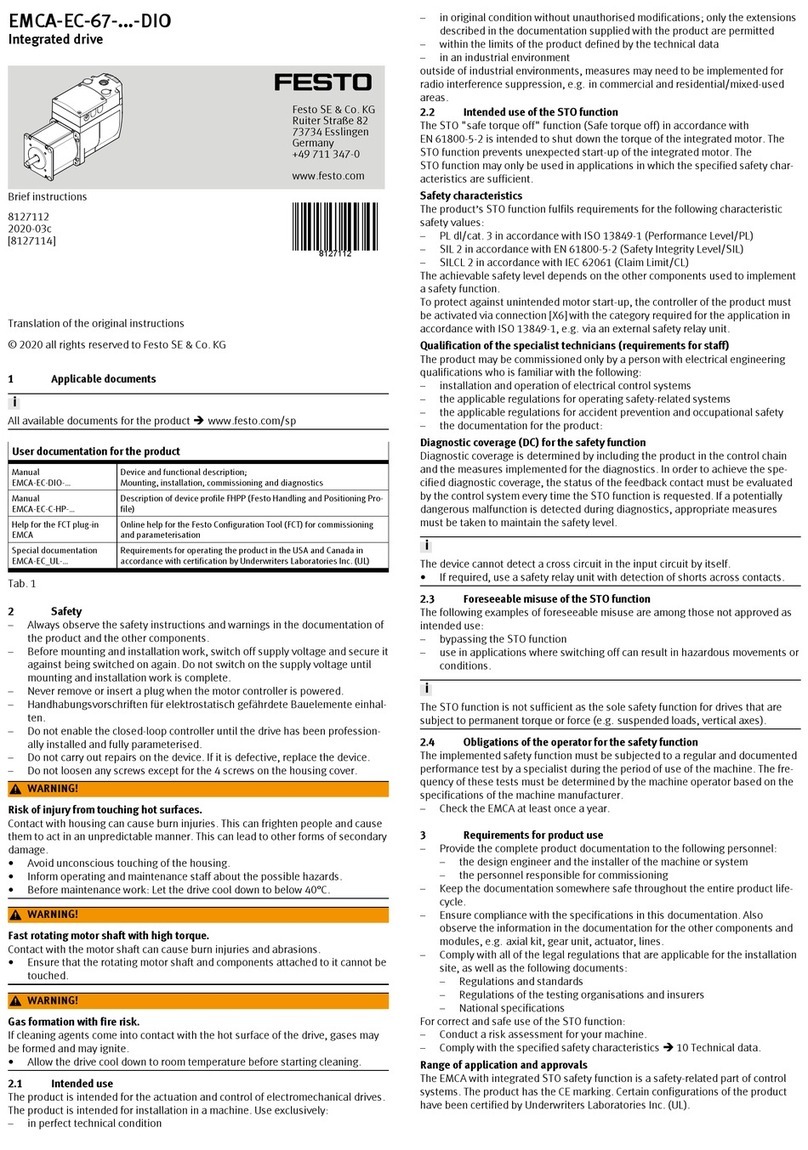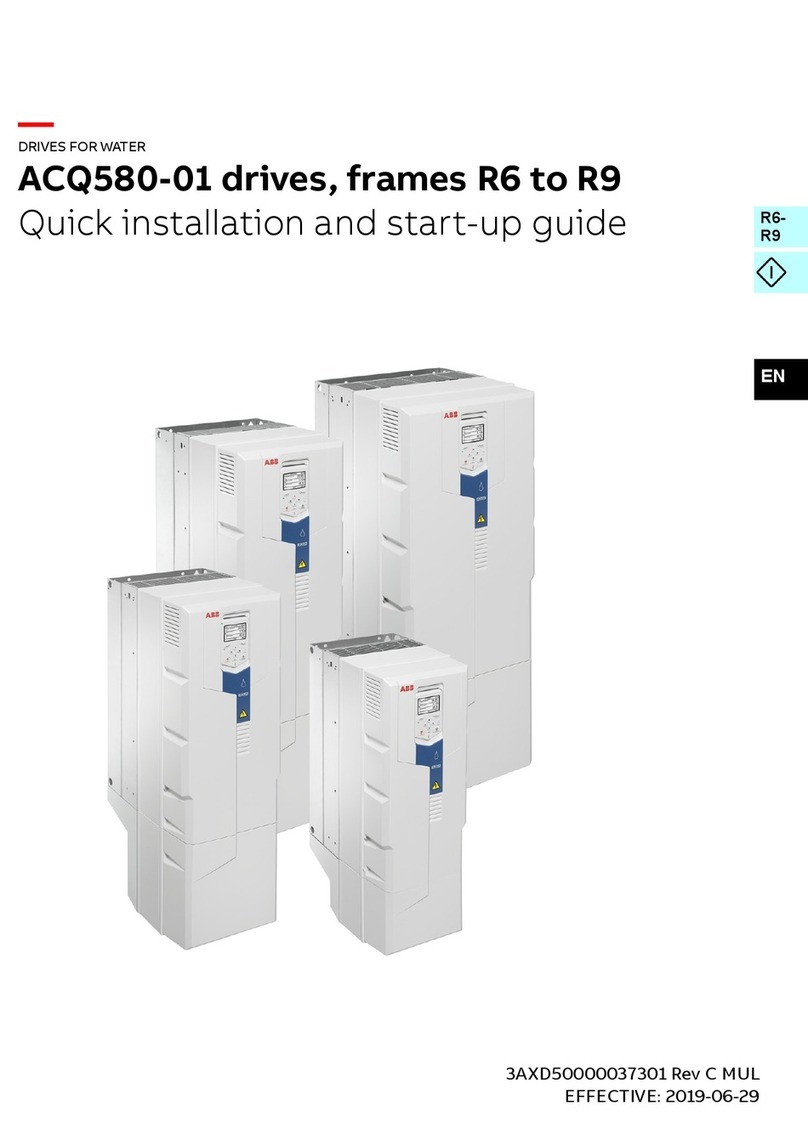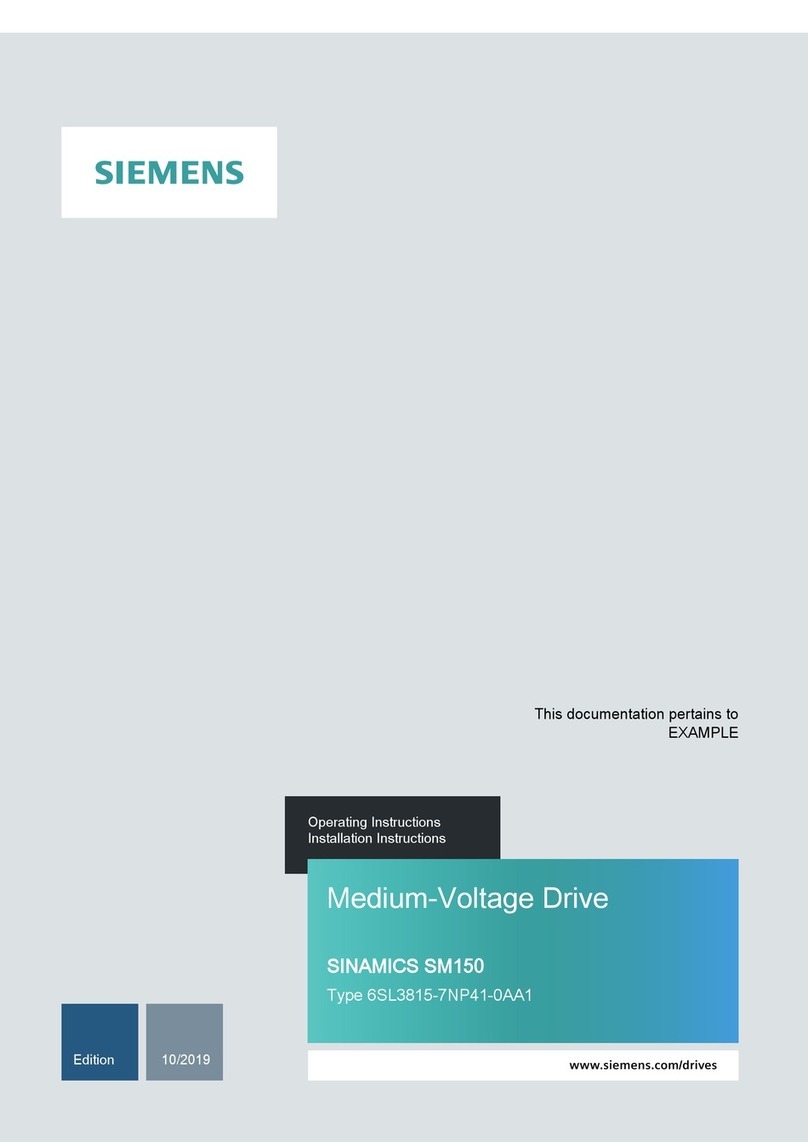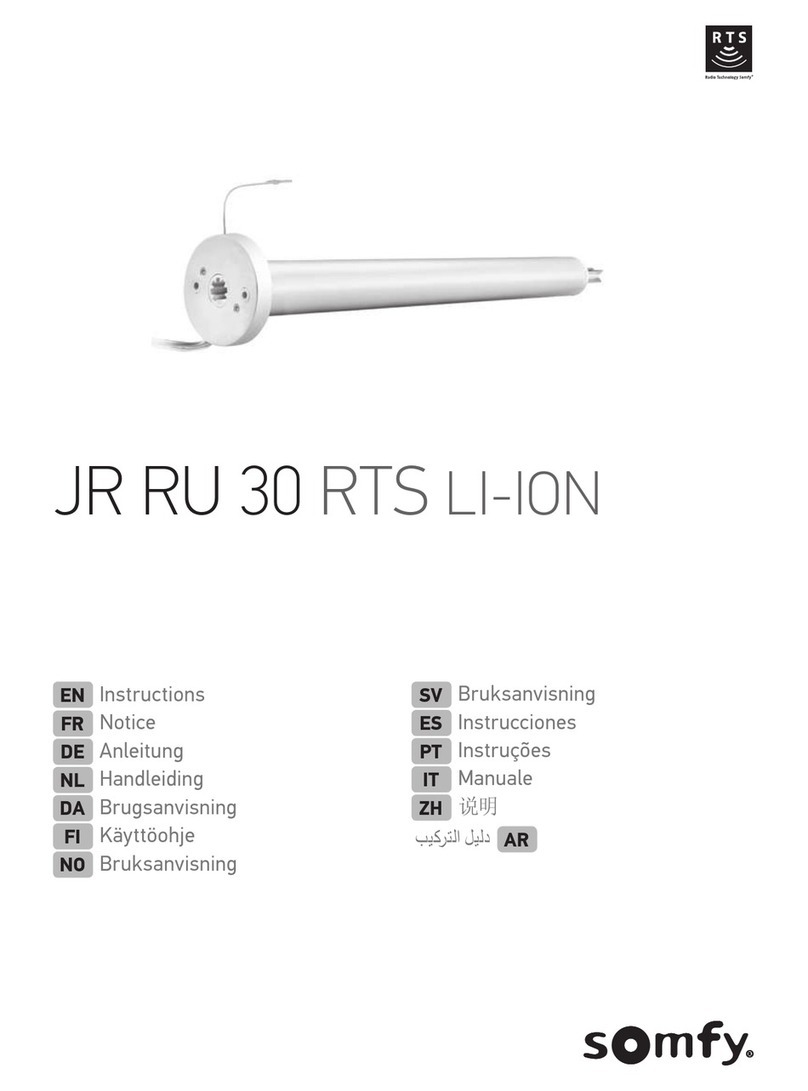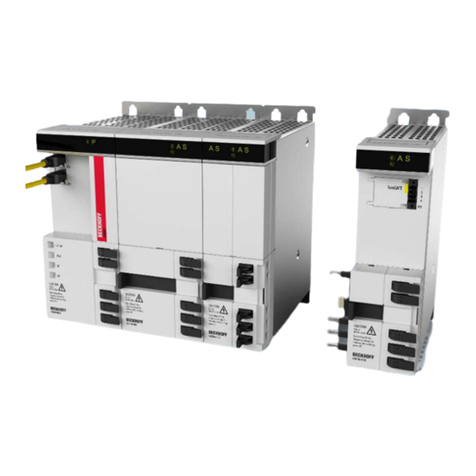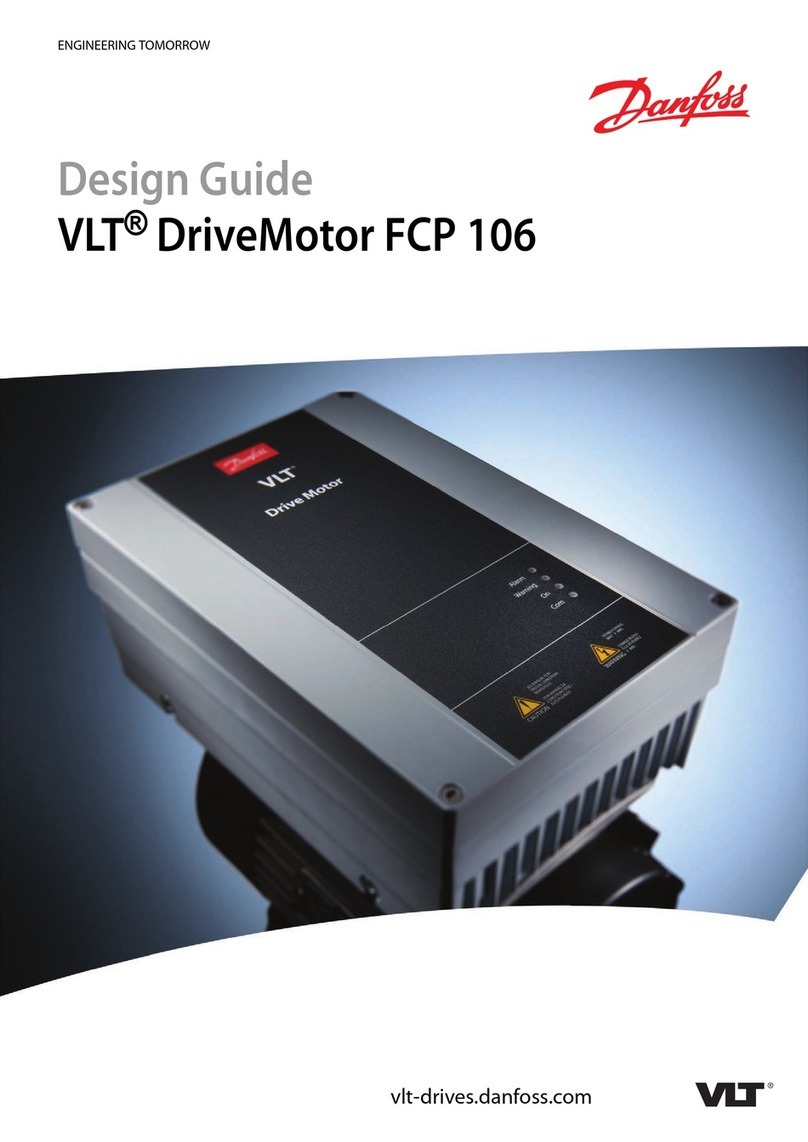6.2 Product variants and type code
Fig. 2 explains selected product characteristics that are necessary
to understand the instructions.
Description of the complete type code: èwww.festo.com/catalogue.
Characteristic Value Description
Type code DFPD Quarter turn actuator
System of units –
N
Metric
Imperial
Size 700, 900, 1200,
2300
Swivel angle 90, 180 Swivel angle specification in [°]
Closing direction L
R
Closes to the left
Closes to the right
Mode of operation D
S
Double-acting
Single-acting
Spring configuration –, 20, 25, 30, 35,
40, 45, 50, 55, 60
Not for double-acting drive,
for connection pressure with single-acting drive
Flange hole pattern 1 F10, F12, F14 Flange hole pattern according to ISO 5211
Flange hole pattern 2 F12, F16 Flange hole pattern according to ISO 5211
Temperature range T4, T5, T6 èTechnical data
Fig. 2
7 Function
The piston movement of the DPFD is converted through a rack & pinion kinematics
(rack and pinion principle) into a swivel motion of the transmission shaft.
– Single-acting quarter turn actuators: Return is
through spring force.
Fig. 3
– Double-acting quarter turn actuators: Through
pressurising and exhausting of the cylinder cham
bers, the shaft turns back and forth.
Fig. 4
Symbol on the rating plate
Type code Mode of operation Symbol
DFPD-...-RD-...
DFPD-...-LD-...
Double-acting
Closes to the right / left
DFPD-...-RS-... Single-acting (spring return)
Closes to the right
DFPD-...-LS-... Single-acting (spring return)
Closes to the left
Fig. 5
8 Conveying and storage
Warning
Danger of crushing! Danger of shearing!
The product without accessories weighs up to 80 kg, depending on the product
version.
Body parts can be crushed or severed if the product falls.
Use appropriate load handling equipment.
For DFPD-2300: Use additional threaded holes (èFig. 1, 9) for transport lugs.
When dispatching used products: Comply with all legal requirements for hand
ling hazardous substances and conveying dangerous goods.
For return to Festo èChapter 2.
Remove all attachments.
Store the product in a cool, dry, UV-protected and corrosion-protected environ
ment. Ensure that storage times are kept to a minimum.
9 Mounting and installation
Note
Mounting and installation should only be carried out by qualified personnel.
9.1 Mounting without adapter bridge
1. Prepare process valve.
– Adjust the switching shaft of the process valve
so that the desired operating method for open
ing and closing is implemented.
2. Place the quarter turn actuator on the switching
shaft of the process valve. The square of the pro
cess valve must sit in the coupling of the quarter
turn actuator (èFig. 1, aB ) without tilting.
3. Fasten the quarter turn actuator to the connecting
flange of the process valve with 4 corrosion-resist
ant screws and retaining rings (material: CI).
4. Tighten the screws crosswise.
– Tightening torque èFig. 8
Fig. 6
9.2 Mounting with adapter bridge
1. Have suitable adapter bridge and shaft extension
ready.
– Accessories èwww.festo.com/catalogue
2. Mount the adapter bridge (èFig. 7, 1)
to the quarter turn actuator.
– Align studs of the adapter bridge lengthwise
to the actuator.
– Align open side of the adapter bridge
on the process valve.
– Tighten screws, but not yet fully tight.
3. Prepare process valve.
– Adjust the switching shaft of the process valve
so that the desired operating method for open
ing and closing is implemented.
4. Insert shaft extension (èFig. 7, 2). The square
of the shaft extension must sit in the coupling of
the quarter turn actuator (èFig. 1, aB ) without
tilting.
5. Place the quarter turn actuator with adapter
bridge and shaft extension onto the switching
shaft of the process valve. The square of the pro
cess valve must sit in the coupling of the shaft
extension without tilting.
6. Mount the adapter bridge to the connecting flange
of the process valve with 4 corrosion-resistant
screws and retaining rings (material: CI).
7. Tighten the screws at both the actuator and
process valve crosswise.
– Tightening torque èFig. 8
Fig. 7
1
2
Flange type F10 F12 F14 F16
Tightening torque [Nm] 46 … 50 80 … 84 190 … 200 370 … 390
Fig. 8

